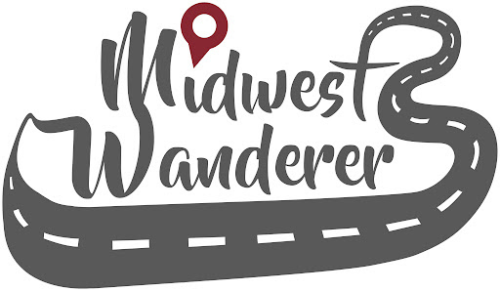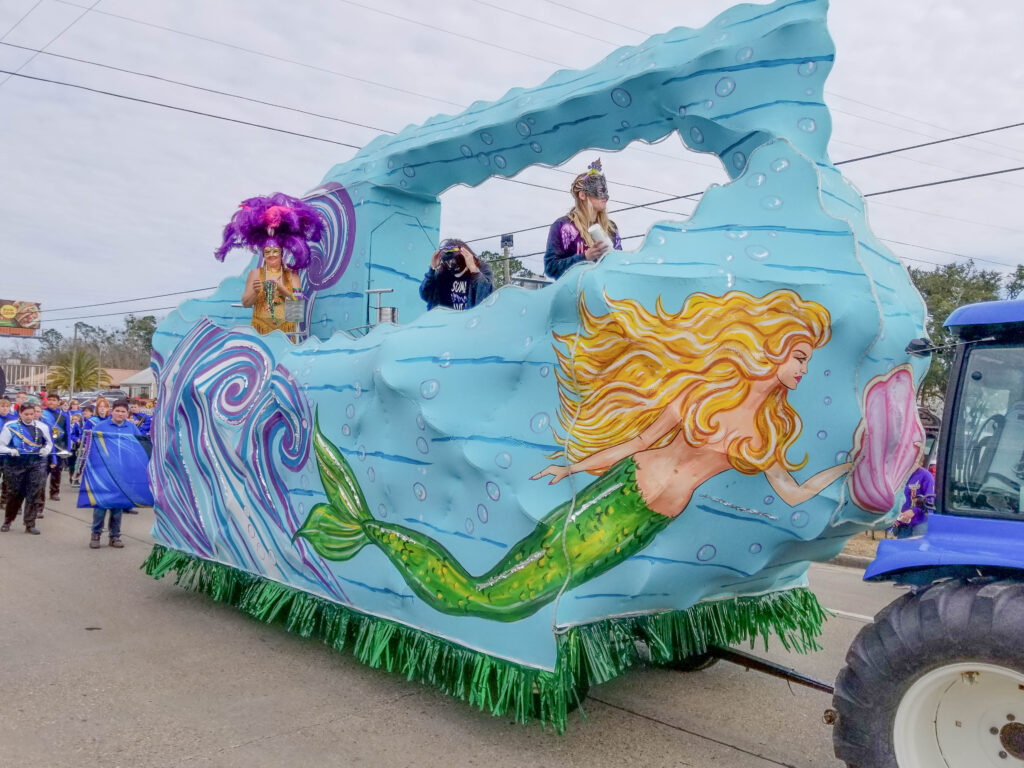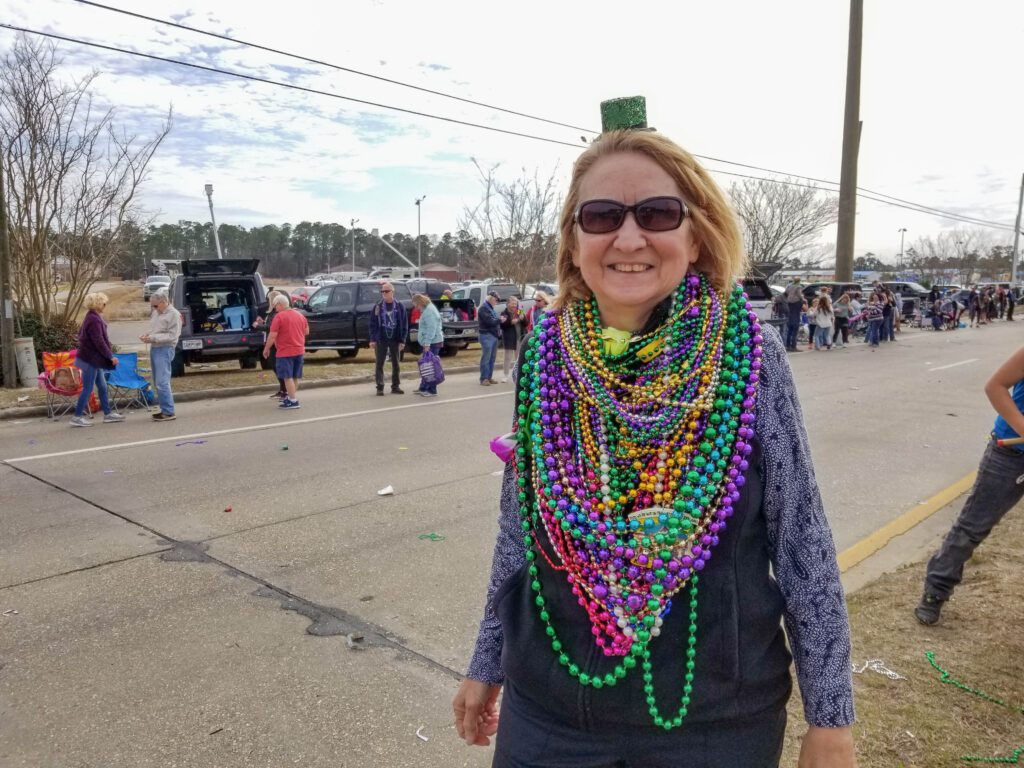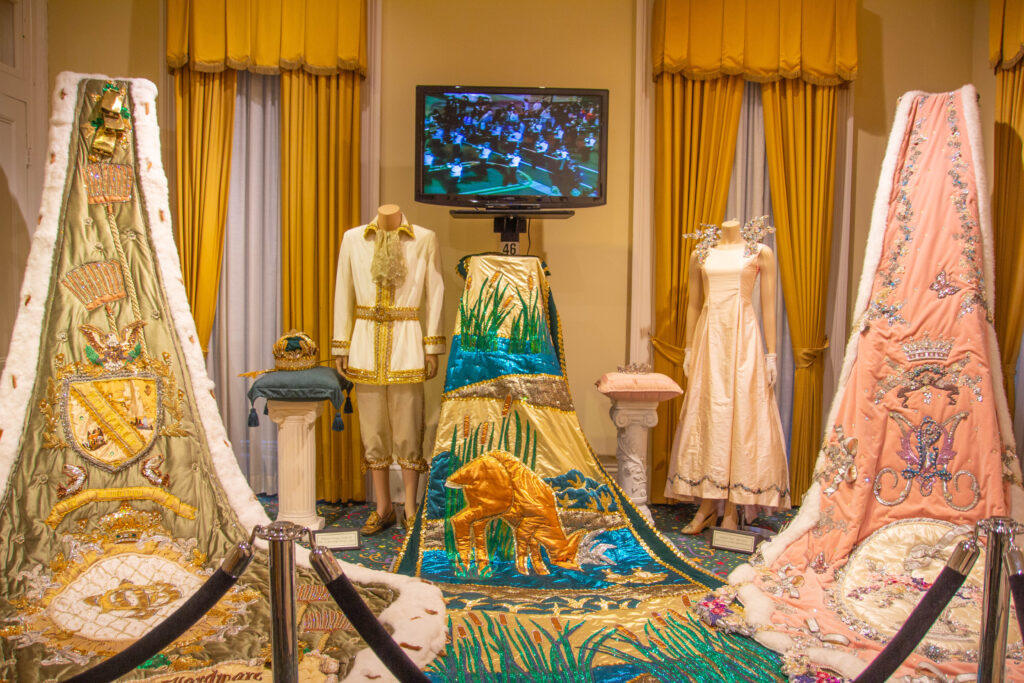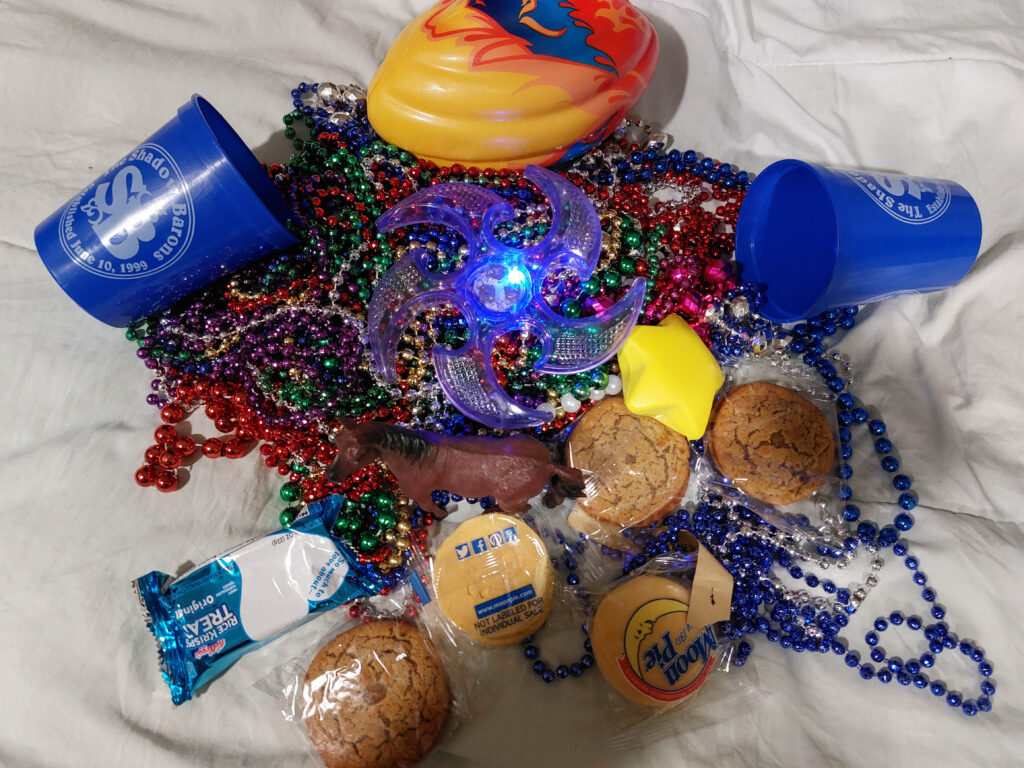Experience the fun of Mardi Gras parades without the raucous crowds of New Orleans. Here are our family-friendly Mardi Gras experiences on the Mississippi Gulf Coast and in the Mobile, Alabama, area. (Video or read the transcript)
Family-Friendly Mardi Gras on the Gulf Coast Transcript:
We’ve all heard stories about Mardi Gras in New Orleans. Massive crowds, lots of booze, and what it takes for a woman to have beads thrown to her from a parade float. I’ve never had a desire for any of that. But, having spent two Mardi Gras seasons in the Mississippi and Alabama Gulf Coast regions, we’ve discovered a different style of Mardi Gras celebration—one that’s a lot of fun, but remains family friendly.
What we didn’t realize before, Mardi Gras doesn’t begin the weekend before Fat Tuesday. It actually starts around the first weekend following January 6, which is the official end to the Christmas season. In fact, the first parades in both Mississippi and Alabama in 2024 are on January 13. Why so early? They have to begin early to get all the parades in. Mobile alone has 35 mystic orders that parade. That’s a lot to squeeze in between early January and Fat Tuesday. The closer it gets to Fat Tuesday, the more parades there are, often with six or more on the last few Mardi Gras days.
Here is what we’ve experienced with Mardi Gras Parades over the past couple of years.
Waveland, Mississippi
We discovered that local parade spectators really get into it. Many looked like they had been there since early morning. They play corn hole (bean bags), kids ride bikes in the streets, and they have big coolers filled with food and drink. They brought grills, as well.
Once the parade started, it was non-stop for at least an hour and a half. Float after float, most of them beautifully decorated. Some carried Mardi Gras “royalty”… the queens and the kings and their courts, wearing beautiful gowns and costumes.
But the most fun part of the parade is catching the “throws,” which are mostly beads. I ended up with what felt like 10 pounds of beads around my neck.
It isn’t about actually having what you catch, rather about the catch itself. With no use for so many beads, we later donated them to the visitor center, where they hand the beads out to visitors on bus trips. Such fun!
We could have gone to more parades after that. They’re held in towns all along the Mississippi Gulf Coast, but the one was plenty for us.
Mobile Carnival Museum
The following year, we specifically stayed in a campground near Mobile, Alabama, so we’d be there during Mardi Gras season. Something you may not know, Mobile is actually the birthplace of Carnival in the United States—not New Orleans—and they also celebrate in a big way.
We learned a lot about Mobile’s Mardi Gras when we visited the Mobile Carnival Museum. It’s where we learned about the Mystic Societies who participate in Mardi Gras. (In Louisiana and Mississippi, these social groups are called Krewes.) As I mentioned earlier, 35 of the more than 80 Mobile mystic societies hold parades during Mardi Gras. Most of them also hold formal balls.
There are two major Mardi Gras associations in Mobile that oversee Mardi Gras: The Mobile Carnival Association and the Mobile Area Mardi Gras Association. Each of those organizations chooses a king and a queen every year. This is such a big deal that a United States Navy ship actually docks in Mobile each year, and a couple of sailors act as escorts for the queens.
Daphne, Alabama, Mardi Gras Parade
We went to two parades the year we spent near Mobile, one in nearby Daphne, and the other in downtown Mobile.
Honestly, because we weren’t familiar with Mobile, we were apprehensive about driving downtown for a night-time parade. So, the first parade we went to was in Daphne, a town located across the bay from Mobile. We lucked out, scoring the only parking spot left near a church, right along the route.
This parade was a lot shorter than the one in Waveland the prior year, but it was still fun. It was here that we discovered that another big “throw” in Alabama besides beads is Moon Pies, believe it or not. There are other “throws” too, including more wrapped snack treats and small stuffed animals.
Mobile, Alabama, Parade
On Fat Tuesday, we went to a daytime parade in downtown Mobile. (It turns out we would have been fine going to a night-time parade there, too.) We drove over early to get a convenient parking spot, and walked around the downtown area for a couple hours before we picked a spot to stand along the parade route. This parade did bring bigger, but still well-behaved crowds.
What Happens After Fat Tuesday?
So, what happens after Fat Tuesday, after all of the hoopla? Well, as soon as one Mardi Gras season ends, the organizations start tearing down their floats and building new ones for the next year. It takes that long to prepare and get it all done.
If You Go to Family-Friendly Mardi Gras Parades
So, if you’re looking for a family-friendly place to celebrate Mardi Gras, Coastal Mississippi and Alabama are both excellent places to visit. You’ll find the parade schedules online for South Mississippi, the Mobile, Alabama, area, and all of the Alabama Gulf Coast, as well.
